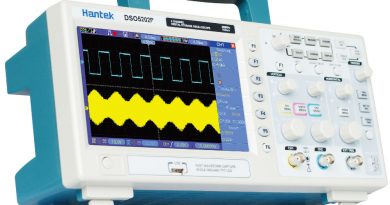Floating Oscilloscope Measurements & Safety
Oscilloscope users frequently need to take floating measurements in which neither point of the measurement is at ground potential. The signal common can be elevated to hundreds of volts from earth and, in addition, a number of these measurements must reject high common-mode signals.
(A common-mode signal is a signal present at both points in a given circuit — identical in amplitude, frequency, and phase and referenced to ground. To make a floating measurement with a digital storage oscilloscope necessitates the rejection of the common-mode signal, so that the instrument can display the difference signal.)
Furthermore, unwanted ground current may add bothersome hum and ground loops. Unfortunately, users often resort to potentially dangerous measurement techniques to surmount these issues.
Traditional oscilloscopes can’t handle these issues alone. The majority of oscilloscopes have signal common terminals connected to the protective grounding system, which is done to ensure that all signals applied to or supplied from the instrument have one common connection point (typically the chassis). What this means is that measurements almost always should be made with respect to the earth ground, which in turn restrains a standard oscilloscope from measuring potential differences between two points, neither of which is at ground.
The four safe solutions for these issues fall into four categories: battery-powered oscilloscopes, differential measurement systems, isolated-input oscilloscopes, and monolithic isolation amplifiers.
Floating a ground-referenced oscilloscope is a technique for “defeating” the oscilloscope’s protective grounding system by disconnecting signal common from the earth by either using an isolation transformer or mitigating the grounding system, which allows certain parts of the oscilloscope — namely the chassis, cabinet, and connectors — to cover the potential of the oscilloscope probe ground lead connection point.
This process, however, is dangerous because of the instrument’s elevated voltages and the cumulative stresses on the oscilloscope’s power transformer insulation. Although such stress won’t necessarily caused immediate failure, it may lead to future failures, including shock and fire hazards — even after properly grounding the oscilloscope once more. In addition to the dangerous nature of floating a ground-referenced oscilloscope, measurements taken using this technique are often inaccurate as a result of the total capacitance of the oscilloscope’s chassis being connected straight to the circuit one is testing at the point where the common lead connects.

